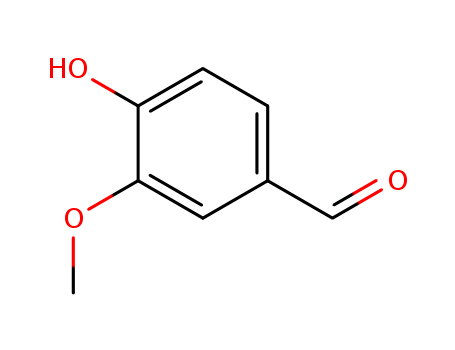- Product Details
Keywords
- supply Chitosan
- low price Chitosan
- hot sale Chitosan
Quick Details
- ProName: low price hot sale supply Chitosan
- CasNo: 9012-76-4
- Molecular Formula: (C6H11NO4)n
- Appearance: powder
- Application: food pharma nutrition healthcare produ...
- PackAge: 25kg/drum
- ProductionCapacity: Metric Ton/Day
- Purity: 99%
- Storage: storage in shady and cool warehouse
- Transportation: transport as the regulation of chemica...
- LimitNum: 0 Metric Ton
Superiority
1.USP/EP/BP/FCC/CP 2.GMP/DMF/KOSHER/HALAL/HACCP 3.10 Years Experience 4.Delivery within 5 days 5.OEM ability …
Details
1.USP/EP/BP/FCC/CP
2.GMP/DMF/KOSHER/HALAL/HACCP
3.10 Years Experience
4.Delivery within 5 days
5.OEM ability
1.Introduction of Chitosan
Chitosan is produced commercially by deacetylation of chitin, which is the structural element in the exoskeleton of crustaceans (such as crabs and shrimp) and cell walls of fungi. The degree of deacetylation (%DD) can be determined by NMR spectroscopy, and the %DD in commercial chitosans ranges from 60 to 100%. On average, the molecular weight of commercially produced chitosan is between 3800 and 20,000 Daltons. A common method for the synthesis of chitosan is the deacetylation of chitin using sodium hydroxide in excess as a reagent and water as a solvent. This reaction pathway, when allowed to go to completion (complete deacetylation) yields up to 98% product.
The amino group in chitosan has a pKa value of ~6.5, which leads to a protonation in acidic to neutral solution with a charge density dependent on pH and the %DA-value. This makes chitosan water soluble and a bioadhesive which readily binds to negatively charged surfaces such as mucosal membranes. Chitosan enhances the transport of polar drugs across epithelial surfaces, and is biocompatible and biodegradable. Purified quantities of chitosans are available for biomedical applications.
2.Properties of Chitosan
(1)ACD/LogP: -11.706 (2)# of Rule of 5 Violations: 3
(3)ACD/LogD (pH 5.5): -21.79 (4)ACD/LogD (pH 7.4): -17.96
(5)ACD/BCF (pH 5.5): 1.00 (6)ACD/BCF (pH 7.4): 1.00
(7)ACD/KOC (pH 5.5): 1.00 (8)ACD/KOC (pH 7.4): 1.00
(9)#H bond acceptors: 48 (10)#H bond donors: 37
(110#Freely Rotating Bonds: 55 (12)Polar Surface Area: 808 ?2
(13)Index of Refraction: 1.701 (14)Molar Refractivity: 336.803 cm3
(15)Molar Volume: 870.564 cm3 (16)Polarizability: 133.519 10-24cm3
(17)Surface Tension: 122.210998535156 dyne/cm (18)Density: 1.753 g/cm3
3.Structure Descriptors of Chitosan
SMILES:
COC(=O)N[C@@H]1[C@H]([C@@H]([C@H](O[C@H]1O[C@@H]2[C@H](O[C@H]([C@@H]([C@H]2O)N)O[C@@H]3[C@H](O[C@H]([C@@H]([C@H]3O)N)O)CO)CO)CO)O[C@H]4[C@@H]([C@H]([C@@H]([C@H](O4)CO)O[C@H]5[C@@H]([C@H]([C@@H]([C@H](O5)CO)O[C@H]6[C@@H]([C@H]([C@@H]([C@H](O6)CO)O[C@H]7[C@@H]([C@H]([C@@H]([C@H](O7)CO)O[C@H]8[C@@H]([C@H]([C@@H]([C@H](O8)CO)O[C@H]9[C@@H]([C@H]([C@@H]([C@H](O9)CO)O)O)N)O)N)O)N)O)N)O)N)O)N)O
Std. InChI:
InChI=1S/C56H103N9O39/c1-87-56(86)65-28-38(84)46(19(10-74)96-55(28)104-45-18(9-73)95-49(27(64)37(45)83)97-39-12(3-67)88-47(85)20(57)31(39)77)103-54-26(63)36(82)44(17(8-72)94-54)102-53-25(62)35(81)43(16(7-71)93-53)101-52-24(61)34(80)42(15(6-70)92-52)100-51-23(60)33(79)41(14(5-69)91-51)99-50-22(59)32(78)40(13(4-68)90-50)98-48-21(58)30(76)29(75)11(2-66)89-48/h11-55,66-85H,2-10,57-64H2,1H3,(H,65,86)/t11-,12-,13-,14-,15-,16-,17-,18-,19-,20-,21-,22-,23-,24-,25-,26-,27-,28-,29-,30-,31-,32-,33-,34-,35-,36-,37-,38-,39-,40-,41-,42-,43-,44-,45-,46-,47-,48+,49+,50+,51+,52+,53+,54+,55+/m1/s1
Std. InChIKey:
FLASNYPZGWUPSU-SICDJOISSA-N
4.Usage of Chitosan
Natural biocontrol and elicitor
In agriculture, chitosan is used primarily as a natural seed treatment and plant growth enhancer, and as an ecologically friendly biopesticide substance that boosts the innate ability of plants to defend themselves against fungal infections. The natural biocontrol active ingredients, chitin/chitosan, are found in the shells of crustaceans, such as lobsters, crabs, and shrimp, and many other organisms, including insects and fungi. It is one of the most abundant biodegradable materials in the world. Degraded molecules of chitin/chitosan exist in soil and water. Chitosan applications for plants and crops are regulated by the EPA, and the USDA National Organic Program regulates its use on organic certified farms and crops.EPA-approved, biodegradable chitosan products are allowed for use outdoors and indoors on plants and crops grown commercially and by consumers.The natural biocontrol ability of chitosan should not be confused with the effects of fertilizers or pesticides upon plants or the environment. Chitosan active biopesticides represent a new tier of cost-effective biological control of crops for agriculture and horticulture.The biocontrol mode of action of chitosan elicits natural innate defense responses within plant to resist insects, pathogens, and soil-borne diseases when applied to foliage or the soil. Chitosan increases photosynthesis, promotes and enhances plant growth, stimulates nutrient uptake, increases germination and sprouting, and boosts plant vigor. When used as seed treatment or seed coating on cotton, corn, seed potatoes, soybeans, sugar beets, tomatoes, wheat and many other seeds, it elicits an innate immunity response in developing roots which destroys parasitic cyst nematodes without harming beneficial nematodes and organisms. Agricultural applications of chitosan can reduce environmental stress due to drought and soil deficiencies, strengthen seed vitality, improve stand quality, increase yields, and reduce fruit decay of vegetables, fruits and citrus crops (see photo right).Horticultural applications of chitosan increases blooms and extends the life of cut flowers and Christmas trees. The US Forest Service has conducted research on chitosan to control pathogens in pine trees. and chitosan's ability to increase pine tree resin pitch outflow by 40% to resist pine beetle infestation.
Water filtration
Chitosan can also be used in water processing engineering as a part of a filtration process. Chitosan causes the fine sediment particles to bind together, and is subsequently removed with the sediment during sand filtration. It also removes phosphorus, heavy minerals, and oils from the water. Chitosan is an important additive in the filtration process. Sand filtration apparently can remove up to 50% of the turbidity alone, while the chitosan with sand filtration removes up to 99% turbidity.Chitosan has been used to precipitate caseins from bovine milk and cheese making.
Potential industrial use
Scientists have recently developed a polyurethane coating that heals its own scratches when exposed to sunlight, offering the promise of scratch-free cars and other products. The self-healing coating uses chitosan incorporated into traditional polymer materials, such as those used in coatings on cars, to protect paint. When a scratch damages the chemical structure, the chitosan responds to ultraviolet light by forming chemical chains that begin bonding with other materials in the substance, eventually smoothing the scratch. The process can take less than an hour.
Biomedical uses
Chitosan's properties allow it to rapidly clot blood, and has recently gained approval in the United States and Europe for use in bandages and other hemostatic agents. Chitosan hemostatic products have been shown in testing by the U.S. Marine Corps to quickly stop bleeding and to reduce blood loss, and result in 100% survival of otherwise lethal arterial wounds in swine.
5. Package






